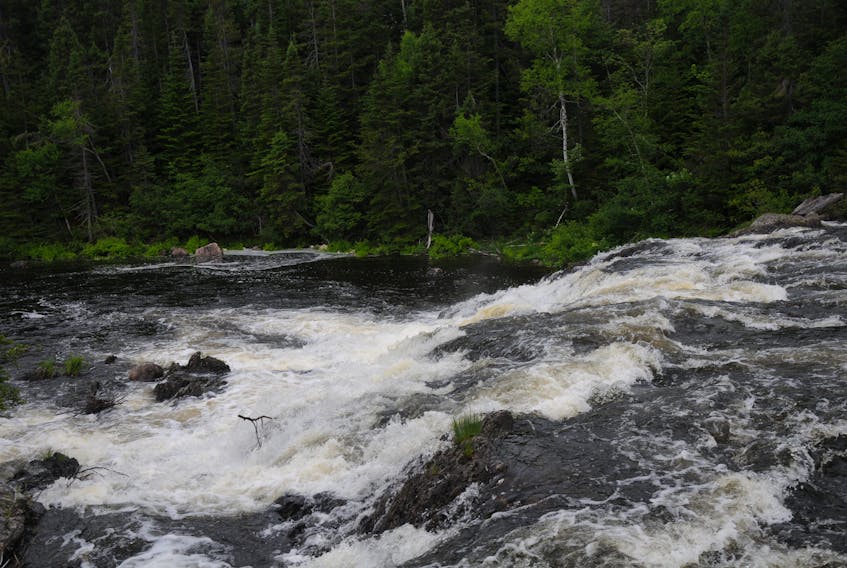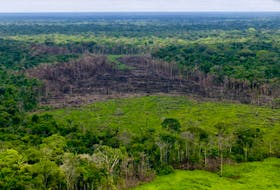With Atlantic salmon stocks in decline and 80 per cent of Newfoundland and Labrador’s monitored rivers down more than 30 per cent over the last five to six years, John Baird says science is needed now more than ever.
The Department of Fisheries and Oceans Canada confirmed the drastic decline in March, with reports also indicating salmon eggs were below river-specific points — and considered in a “critical zone” — on three of four of the DFO-monitored rivers in Labrador and nine of the 15 rivers in Newfoundland.
Related N.L. Atlantic salmon counts are concerning: DFO
Which is why Baird, who is with the Freshwater-Alexander Bays Ecosystem Corporation, was “tickled pink” about a $310,000 funding announcement from the Atlantic Salmon Conservation Foundation for Newfoundland and Labrador organizations April 12.
Within central Newfoundland, a press release from the conservation foundation, states Freshwater-Alexander Bays Ecosystem Corporation received $42,677 to carry out research on the Terra Nova River, the Gander Bay Indian Band Council was awarded $25,000 to continue monitoring operations at the Salmon Brook Fishway, and the Indian Bay Ecosystem Corporation received $20,366 for Adurt Brook conservation and restoration, and, a restoration project at Jim’s Steady.
The release further stated the foundation awarded funds to 13 provincial conservation projects, with the work to be carried out this summer. In total, 66 grants were awarded throughout Atlantic Canada and Quebec, totalling more than $1.1 million. Projects range from habitat restoration and conservation to monitoring and education initiatives, according to the foundation.
Baird said the funding will be used to evaluate the success of a habitat expansion and enhancement on Upper Terra Nova River. The Terra Nova River runs through the northern section of the national park, emptying into Bonavista Bay, near Glovertown.
In 1985, he said, a fishway was installed at an area of the river called Mullygajeck Falls – 56 kilometres from the mouth of the river – to help salmon bypass the falls on their journey upstream. Furthermore, from 1985 to 2001, hatchery and transplant efforts were used to enhance the river’s salmon stock.
In 2015 and 2016, a counting fence was installed to monitor the outcome of the stock-building effort. The research revealed problems with the fishway, as salmon couldn’t pass through it during periods with low water levels.
That was corrected in 2017, and, Baird said, the goal is to again monitor returns to see if the modifications were successful in moving salmon past the falls.
According to the Department of Fisheries and Oceans fishway counts, salmon counts on the Terra Nova River dropped from 5,637 in 2016, to 3,215 in 2017.
Which is why the science is needed, Baird said.
“It’s crucial these days, because of the threat that salmon are under, to really understand what is going on,” he said. “(The research) will identify if there are any weaknesses that we need to address, in terms of enhancing the habitat and the migration of the salmon, to help support the stock’s growth.”
It’s a sentiment that was echoed by Calvin Francis with the Gander Bay Indian Band Council, who oversees the Salmon Brook Fishway, near Glenwood.
Salmon returns were down at this area as well, dropping from 970 in 2016, to 394 in 2017.
After two consecutive years of significant decline, Francis says the data collected in 2018 is of the utmost importance, claiming it will be a tell-tale year about the province’s salmon stock stability.
“The first year isn’t a big concern, because there are always fluctuations in numbers, the second year starts to point to problems,” he said. “After a third year, and there’s still low numbers, you’ve got your confirmation that the stock is in trouble.”
“That’s why having people monitoring the fences is so important.”









